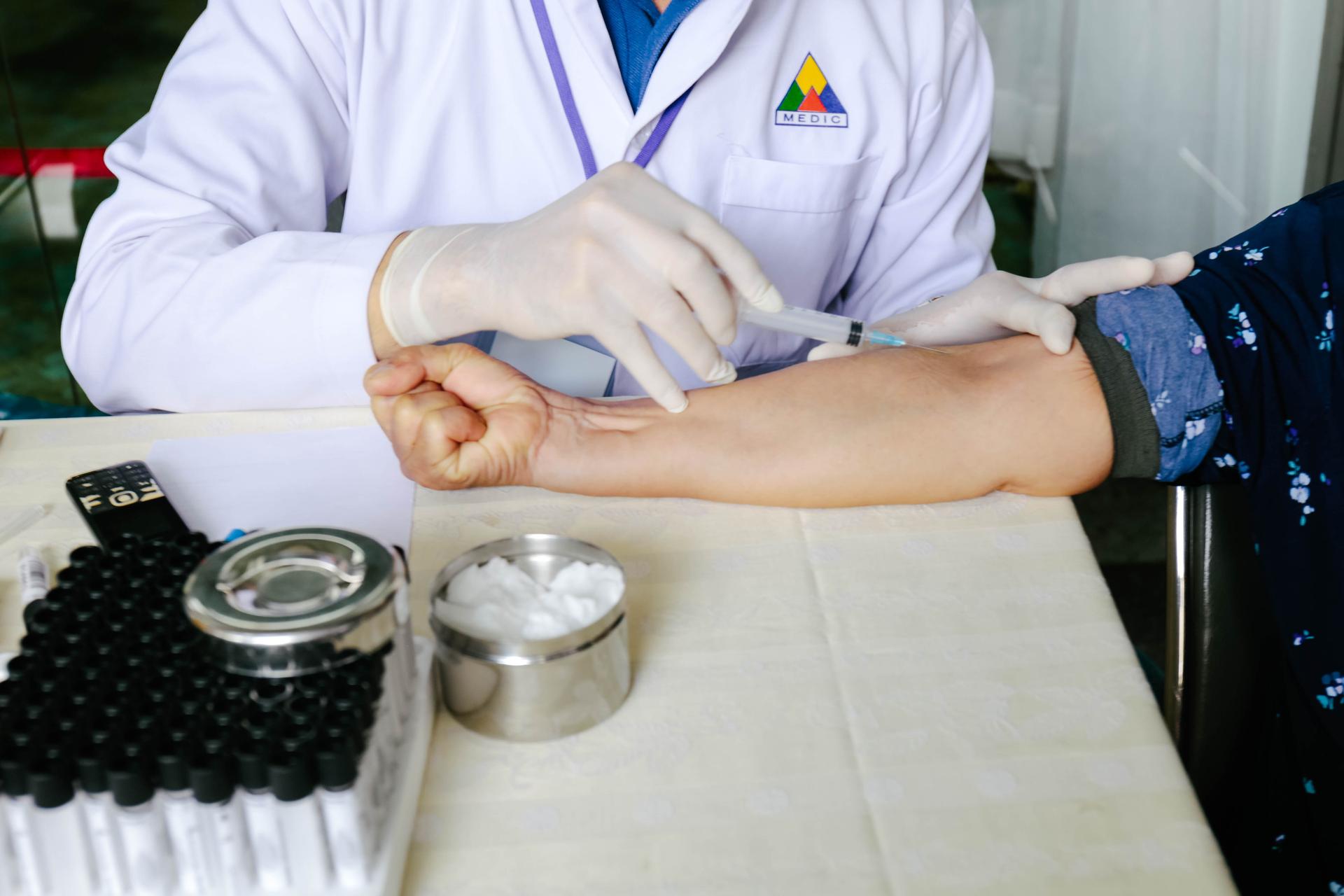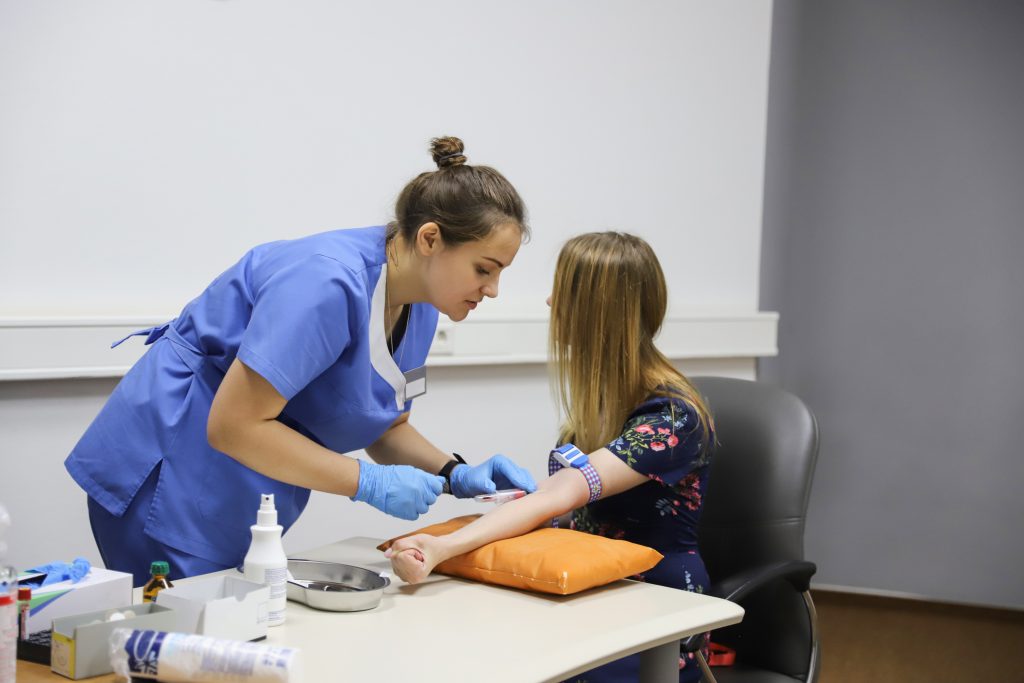The Single Strategy To Use For Northeast Medical Institute - New Haven Campus Phlebotomy Course & Cna Class
The Single Strategy To Use For Northeast Medical Institute - New Haven Campus Phlebotomy Course & Cna Class
Blog Article
Some Known Facts About Northeast Medical Institute - New Haven Campus Phlebotomy Course & Cna Class.
Table of ContentsThe Ultimate Guide To Northeast Medical Institute - New Haven Campus Phlebotomy Course & Cna ClassMore About Northeast Medical Institute - New Haven Campus Phlebotomy Course & Cna ClassTop Guidelines Of Northeast Medical Institute - New Haven Campus Phlebotomy Course & Cna ClassThe 3-Minute Rule for Northeast Medical Institute - New Haven Campus Phlebotomy Course & Cna ClassHow Northeast Medical Institute - New Haven Campus Phlebotomy Course & Cna Class can Save You Time, Stress, and Money.Northeast Medical Institute - New Haven Campus Phlebotomy Course & Cna Class - An Overview
The use of such gadgets need to be gone along with by other infection prevention and control techniques, and training in their usage.For setups with low sources, expense is a driving aspect in procurement of safety-engineered devices. Where safety-engineered tools are not available, competent use of a needle and syringe is acceptable.
labelling); transportation conditions; analysis of outcomes for scientific monitoring. In an outpatient department or clinic, supply a devoted phlebotomy cubicle containing: a tidy surface area with two chairs (one for the phlebotomist and the various other for the individual); a hand clean basin with soap, running water and paper towels; alcohol hand rub. In the blood-sampling space for an outpatient division or clinic, give a comfy reclining couch with an arm remainder.
Northeast Medical Institute - New Haven Campus Phlebotomy Course & Cna Class Things To Know Before You Buy
Make certain that the indications for blood sampling are clearly defined, either in a created protocol or in documented guidelines (e.g. in a research laboratory type). Gather all the devices required for the procedure and place it within secure and easy reach on a tray or cart, ensuring that all the products are clearly noticeable.
Introduce yourself to the person, and ask the client to mention their full name. Check that the laboratory form matches the individual's identification (i.e. match the client's details with the research laboratory form, to make sure accurate recognition).
Make the patient comfortable in a supine position (ideally). Location a clean paper or towel under the patient's arm. Talk about the test to be carried out (see Annex F) and acquire spoken permission. The person has a right to refuse an examination any time prior to the blood sampling, so it is essential to make certain that the person has actually understood the treatment.
Northeast Medical Institute - New Haven Campus Phlebotomy Course & Cna Class - Truths
Extend the person's arm and examine the antecubital fossa or forearm. Find a capillary of a great dimension that shows up, straight and clear. The layout in Area 2.3, shows typical placements of the vessels, but numerous variations are feasible. The average cubital capillary exists in between muscle mass and is usually the most easy to pierce.
DO NOT place the needle where blood vessels are drawing away, due to the fact that this boosts the chance of a haematoma. The vein should be noticeable without applying the tourniquet. Situating the blood vessel will help in determining the correct size of needle. Apply the tourniquet regarding 45 finger sizes above the venepuncture site and re-examine the blood vessel.
Haemolysis, contamination and existence of intravenous fluid and medicine can all modify the outcomes (39. Nursing team and doctors may access central venous lines for specimens following protocols. Specimens from main lines lug a threat of contamination or erroneous research laboratory examination outcomes. It is appropriate, but not ideal, to attract blood specimens when very first presenting an in-dwelling venous tool, before connecting the cannula to the intravenous fluids.
Getting My Northeast Medical Institute - New Haven Campus Phlebotomy Course & Cna Class To Work
Failure to allow sufficient contact time boosts the risk of contamination. DO NOT touch the cleaned up site; in certain, DO NOT position a finger over the blood vessel to assist the shaft of the subjected needle.
Ask the person to create a fist so the capillaries are much more noticeable. Get in the capillary quickly at a 30 degree angle or less, and continue to introduce the needle along the vein at the most convenient angle of access - CNA Classes. Once adequate blood has been accumulated, launch the tourniquet BEFORE withdrawing the needle
Not known Factual Statements About Northeast Medical Institute - New Haven Campus Phlebotomy Course & Cna Class
Take out the needle carefully and use gentle pressure to the site with a clean gauze or completely dry cotton-wool ball. Ask the person to hold the gauze or cotton woollen in position, with the arm prolonged and raised. Ask the person NOT to bend the arm, due to the fact that doing so causes a haematoma.

4 Simple Techniques For Northeast Medical Institute - New Haven Campus Phlebotomy Course & Cna Class
Where possible, keep the tubes in a shelf and move the rack towards you - https://www.openstreetmap.org/user/northeastmed. If the sample tube does not have a rubber stopper, inject very slowly right into the tube as reducing the pressure and speed used to move the specimen minimizes the threat of haemolysis.

Report this page